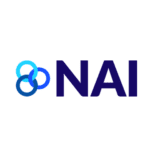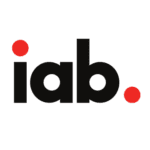Why Track SaaS KPIs?
In the ever-evolving SaaS industry, monitoring and understanding Key Performance Indicators (KPIs) are essential for driving business success. By regularly tracking and analyzing Customer Acquisition Cost (CAC), Customer Lifetime Value (CLV), Monthly Recurring Revenue (MRR), Churn Rate, Customer Retention Rate, Average Revenue per User (ARPU), and Customer Engagement Metrics, SaaS companies can make data-driven decisions to enhance customer acquisition, improve retention, and drive sustainable growth. Embracing these KPIs as part of a comprehensive performance evaluation strategy will enable SaaS businesses to stay competitive and deliver value to their customers in the long run.
The Software-as-a-Service (SaaS) industry has experienced unprecedented growth over the past decade, revolutionizing the way businesses operate and providing scalable, subscription-based solutions to customers worldwide. However, in this highly competitive landscape, it is essential for SaaS companies to monitor and evaluate their performance continually. Key Performance Indicators (KPIs) play a crucial role in assessing the health and success of a SaaS business. In this blog, we will explore the most important KPIs that drive success in the SaaS industry.
Customer Acquisition Cost (CAC)
The Customer Acquisition Cost (CAC) is a fundamental KPI that quantifies the amount of money a company spends to acquire a new customer. This metric encompasses various marketing and sales expenses, such as advertising, sales team salaries, and lead generation tools. A low CAC is desirable, as it indicates an efficient and cost-effective customer acquisition process, ultimately contributing to higher profitability and faster growth.
Customer Lifetime Value (CLV)
The Customer Lifetime Value (CLV) measures the total revenue a company can expect from a single customer over their entire relationship with the business. Understanding the CLV helps SaaS companies assess the long-term potential of their customer base and identify opportunities to increase revenue and customer loyalty. A higher CLV is indicative of strong customer relationships, successful upselling, and effective retention strategies.
Monthly Recurring Revenue (MRR)
MRR is the heart of the SaaS business model, representing the predictable, recurring revenue generated from customer subscriptions each month. Monitoring MRR helps SaaS companies gauge their revenue stability, identify growth trends, and assess the overall health of their business. Tracking changes in MRR over time provides valuable insights into customer acquisition and churn rates.
Churn Rate
Churn Rate measures the percentage of customers who cancel their subscriptions within a given period. Minimizing churn is critical for SaaS companies, as acquiring new customers is typically more expensive than retaining existing ones. High churn rates can signal issues with product-market fit, customer satisfaction, or support, whereas low churn rates indicate satisfied customers and a robust product offering.
Customer Retention Rate
Customer Retention Rate is the inverse of the churn rate and represents the percentage of customers retained over a specific period. A high retention rate signifies strong customer satisfaction and loyalty, which can lead to increased referrals and upselling opportunities. Improving customer retention is often more cost-effective than focusing solely on customer acquisition.
Average Revenue per User (ARPU)
ARPU calculates the average revenue generated from each customer on a monthly or annual basis. It is an important metric for assessing pricing strategies, upselling efforts, and the overall value proposition of a SaaS product. By identifying the highest and lowest ARPU segments, businesses can tailor their marketing and sales efforts more effectively.
Customer Engagement Metrics
Engaged customers are more likely to remain loyal and advocate for a SaaS product. Metrics such as Active Users, Time on Platform, and Feature Adoption provide insights into how customers interact with the product. Analyzing these metrics helps identify opportunities to improve user experience, increase stickiness, and optimize the product to meet customer needs.




